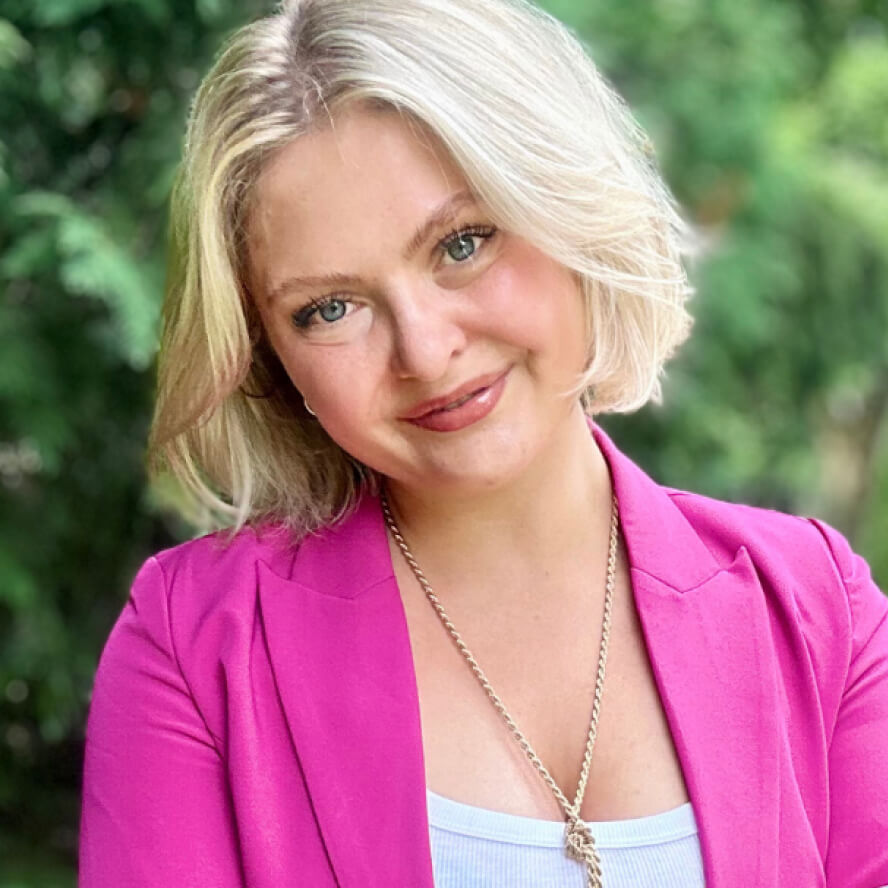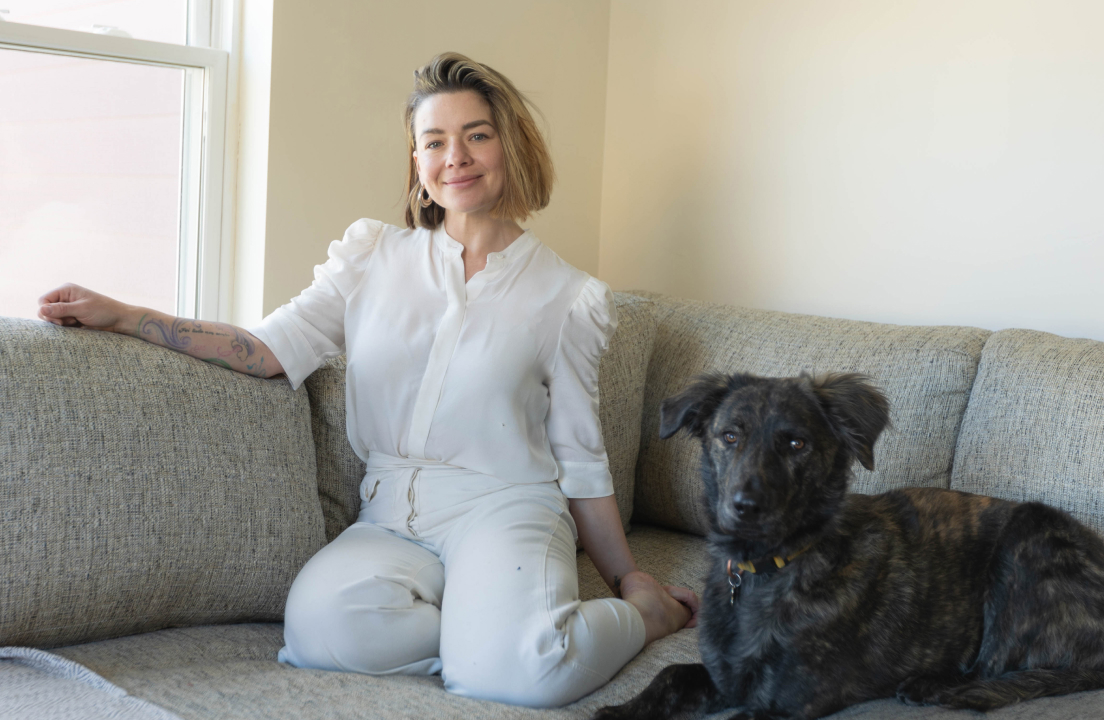T1D Guide
T1D Strong News
Personal Stories
Resources
T1D Misdiagnosis
T1D Early Detection
Research/Clinical Trials
Two Life-changing Diagnoses in Two Months: A Mother and Daughter’s Story
When Caroline Gill’s daughter started showing signs of celiac disease, she thought, “There’s no way.” After living with type 1 diabetes (T1D) herself since she was eight, she worried that might be next. The connection between celiac and T1D is strong, but having one of these conditions doesn’t guarantee you’ll get the other. Caroline stayed hopeful, but when her daughter wet the bed one night, she didn’t hesitate to take her to the doctor.

First, a Celiac Diagnosis
“Getting the celiac diagnosis was really terrifying, but also comforting because there’s something you can do about it,” Caroline said. “Which I would say is also the same for diabetes—it’s a controllable chronic illness. How lucky are we to live in a time where science has evolved that much?”
Caroline remembered the moment she found out about her daughter’s diagnosis. It was May 2025.
“We were in the middle of a Bass Pro shop—which is such a Midwestern place to get a phone call like that—and I was just so devastated,” Caroline said. “A stranger wanted to hug me, and I was like, ‘Don’t touch me.’ I didn’t know anything about celiac disease. But then it happened to my kid.”
Caroline tried to make the experience as positive as possible for her daughter.
“We did a whole dump of the pantry,” Caroline said. “We cleaned out the fridge. I’m sure we missed some things because finding gluten is tricky.”

When Caroline’s daughter had her tests completed for celiac, the doctors also ran an HbA1C test, an easy blood test that monitors your average blood glucose levels over the past two to three months. Her daughter’s levels were slightly elevated at the time, which worried Caroline as a person with T1D, but she convinced herself it would be okay.
Then, a T1D Diagnosis
About two months later, when Caroline stayed in her daughter’s bedroom to watch over her and she wet the bed, Caroline took her to the urgent care center.
Caroline suspected her daughter had a urinary tract infection (UTI). As someone living with T1D, she didn’t want to consider that her daughter might have the same condition. Her daughter mentioned that she was filling her water bottle more often than usual at school, always feeling thirsty, and needing to use the bathroom more frequently.
“When I took her to urgent care on Mother’s Day, I walked in and told them she had a UTI,” Caroline said. “I knew it was possible she could have diabetes, but I really thought she just had a UTI.

Then the doctor came in right away and said that wasn’t the case. I knew what that meant.”
Caroline shed some tears. As her daughter sat there watching her cry, Caroline reassured her, “Mom’s just feeling a lot of things right now.”
Many thoughts flooded through Caroline’s mind that day, including, “Why can’t we just pick one? Of course, I know that’s not something you can do, but I just thought, ‘Why my kid?’”
In just two and a half months, her daughter received two life-changing diagnoses, one of which Caroline was already well-versed in due to her own experience managing the condition since age 8.
The Privilege of Knowing the Signs of T1D
“I am grateful that we knew what to look for,” Caroline said. Fortunately, when Caroline was diagnosed with type 1 diabetes at age eight, her parents were well-informed and knew the signs to watch for.
“It made a world of difference in my upbringing,” Caroline reflected.
Her daughter found herself in a similar situation, something Caroline never took for granted.
“When we’re at the hospital training sessions, every other child she meets has been hospitalized with their new diagnosis and has experienced DKA (diabetic ketoacidosis). My daughter only wet the bed once, and that was enough for us. I thought, ‘Absolutely not. Something isn’t right,’” Caroline explained.
Caroline understands the privilege of being aware of the signs of type 1 diabetes. Many parents without experience in T1D might have mistaken her daughter's symptoms for exhaustion or the flu. This misconception remains all too common despite advancements in technology and knowledge-sharing around the world.
The Probability of a Child’s T1D Diagnosis
Before Caroline had children, she researched the probability of her kids being diagnosed one day. It was low. According to the American Diabetes Association (ADA), the chance of a child developing type 1 diabetes if the mother has T1D and is over 25 years old is 1 in 100. If the mother has type 1 and is younger than 25, the risk increases to one in 25.
%20(2).jpg)
To Caroline, the risk of her children developing T1D wasn’t a reason not to have children, but it was still something she didn’t want for them.
“My biggest fear for my daughter was social isolation,” Caroline said. “A lot of get-togethers are centered around food. At Thanksgiving, it’s bread. At birthday parties, it’s cake. But I’ve been really impressed with the people who’ve reached out, trying to find options for my daughter. We want her to gain independence but also not feel uncomfortable.”
“I never want to put my daughter in a situation where other parents are uncomfortable supporting her,” Caroline said. “I don’t want someone uncomfortable trying to pretend they are with my child.”
Following in Her Mother’s Steps: For Better or Worse
Caroline’s experience growing up with T1D has helped her support her daughter.
“She lived seven years before her diagnosis, watching me support myself without complications," Caroline said. “It’s such a privilege that I got the care I needed despite living in rural Missouri. She never saw it hold me back. I never complained about it. It’s just life. That’s how I see it! I think that’s the beauty of being diagnosed as young as I was—I never knew anything different. I hope that’s the same for her.”
Caroline is proud of how her daughter is already picking up T1D.
“She’s seven and counting carbs—most adults don’t know how to do that,” Caroline said. “And why would they? I think the positive influence of growing up with me as her parent worked out well. I used to jokingly say at the dinner table, ‘Everybody take your insulin!’ And now I’m like, Oh, why did I do that?’ Now, my daughter and I actually do need to take our insulin together.”
Caroline laughed.
“Seeing her go through this is a reminder to set a good example,” Caroline said. “I hear these stories of people being teenagers and going through that teenage angst. Coupled with diabetes, that can be extraordinarily unsafe. I never went through that as a nervous person. And, I think for better or worse, my daughter will have a similar experience—she’s such a rule follower. I think her personality traits are well-suited for type 1 diabetes.”
Controlling Where You Go With T1D
Growing up, Caroline’s parents started a foundation to support her. Years ago, one of the first friends she made through connections in that foundation sadly passed away due to diabetes complications. This is not something she shared with her daughter.
“He never took care of himself from childhood—that’s not a burden she needs to know,” Caroline said. “She knows that taking care of ourselves, diabetes or not, is critical. You see that result as you age. As a social worker, I work with patients with cancer. It sometimes happens, but there are things you can do to reduce your risk. I think we are just focused on giving her the power to know that she can control where this disease takes her. She can live with it. She can thrive with it. It’s not going to stop her from doing anything else.”
To not fuel stigma, Caroline encourages her daughter never to use it as an excuse.
“She can just say no,” Caroline said. “I tell her not to blame it on type 1 diabetes. We don’t need to fuel stigma ourselves.”

Proactive Parenting: TrialNet and Reclaiming T1D
Caroline’s daughter was enrolled in TrialNet as soon as she was born. Her son is also in the program.
In the world of type 1 diabetes (T1D) research, TrialNet is at the forefront. The organization comprises a network of academic institutions, endocrinologists, physicians, scientists, and healthcare teams. It offers screenings for relatives of people with type 1 diabetes to assess their risk.
“Even if he never develops the antibodies, I feel strongly about contributing to science,” Caroline said.
TrialNet research has the power to identify T1D in its earliest stages, often years before symptoms start to appear. Growing up, Caroline’s sister was enrolled in the program for many years as well until she “graduated” from it.

“At one point, they told her she could stop,” Caroline said. “She was probably 38 at the time, and they said, At this point, you just don’t need to do it anymore.’ I’m glad she stuck with it because it was not only important for her but the whole community.”
With her strong background and experience with the disease, reframing the negatives of type 1 diabetes remains a driving force in Caroline’s parenting and serves as an example for her daughter. “It’s not to say, don’t worry about it, but how can you control the situation or make it better?”
“We can’t change our diabetes diagnoses, but we can let it be the catalyst for all the things we’re going to achieve, and that gives us control. When you’re taking good care of yourself, you can do whatever your sights are set on. Type 1 diabetes isn’t going to be the reason you don’t.”








.webp)

.webp)
.jpg)
.jpg)


.jpg)


.jpeg)
.jpg)
.jpg)


.jpg)
.jpg)

.jpg)
.jpg)
.jpg)
.jpg)
.jpg)
.jpg)


.jpg)
.jpg)
.jpg)
.jpg)
.jpg)
.jpg)
.jpg)
.jpg)

.jpg)
.jpg)

.jpg)
.jpg)
.jpg)

.jpg)
.jpg)


.jpg)

.jpg)
.jpg)
.jpg)


















.jpg)



.jpg)














.webp)





%20(1).png)




.jpeg)













.webp)